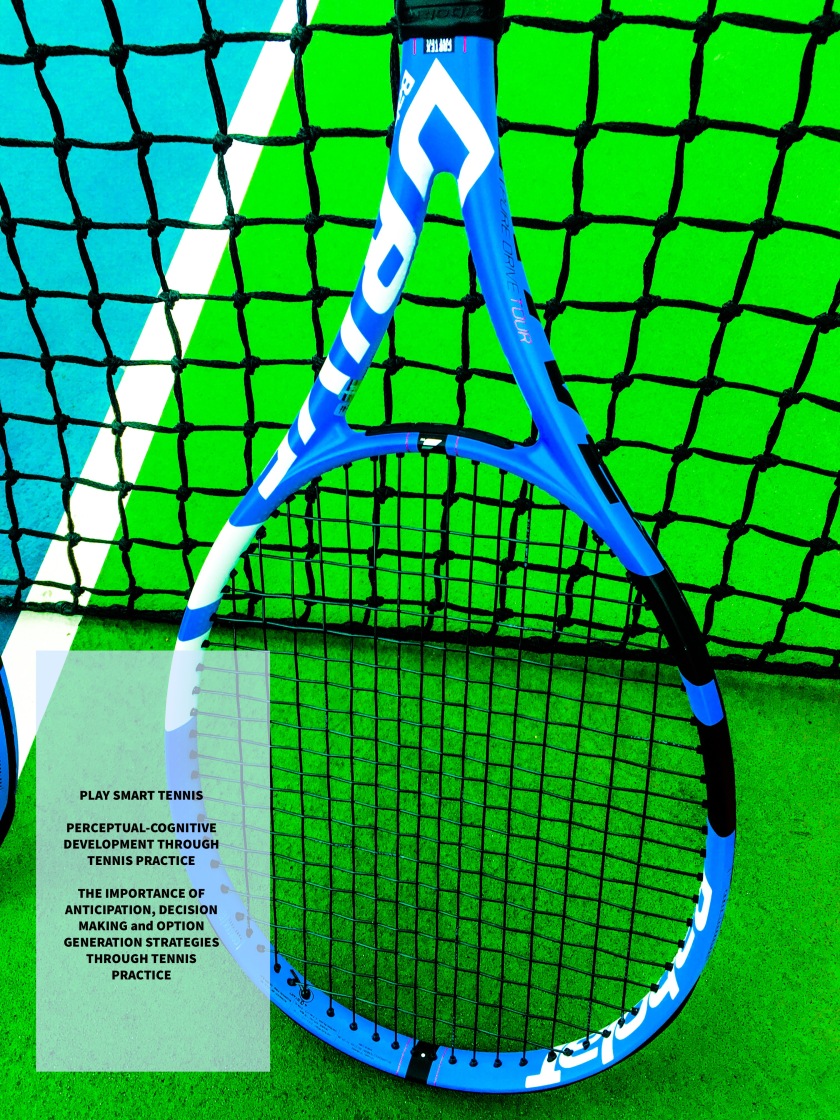Perceptual-cognitive skill in tennis represent the player’s ability to identify the relevant situational information at the court (opponent and ball), compare it with the existing knowledge (developed through practice and experience) so that the most appropriate response can be selected and action taken for execution. The most important adaptations to the situation at the court come from the player’s awareness based on the perceptual and cognitive evaluating skills which are and can be developed through the appropriate tennis practice. The importance of the perceptual-cognitive process is that enables an athlete to create reaction to the opponent’s action in advance (anticipation) and then generates the optimal action response to it (decision making). At the match play the physiological component can be very important but the perceptual-cognitive skills such are anticipation and decision making are underpinning the high level performance. So why the core of the training practice shouldn’t be the development of the anticipation, decision making and so as the process of option generation.
The practice conditions should provide to the athlete an opportunity to develop the skills needed to anticipate based on the informations from the opposite side of the court and then to create options (in optimal cases, an option) which will guide their future reaction of the ball interception. For players to be able to perceive these relevant information, they would have to be exposed to the sources and types of information that will be available during the match and competition. Most of these information are related to the opponent and his/her moving towards the ball, the potential positioning at the moment of the stroke, moments of planting and loading, tactical tendencies, technical and physical strength and weaknesses etc.
The more sources of information the player is challenged to respond to during the practice sessions, the more an athlete will be effectively utilizing those informations in the real time match conditions. In this way the transfer of the practice conditions to the match situation is more accurate and efficient.
At the highest level of the game of tennis due to the extreme time constraints, the players do not have time to think through the options and generate the potential moves but only one, the right one.
The players are restricted to recognize only the relevant action information based on which they should adapt their option generation strategy so they could as fast as possible come up with the adequate reaction.
There are two theories that I think that the coaches could learn something from about the needs of perceptual and cognitive aspect of the tennis practice.
The first one is the Recognition Primed Decision (RPD) model theory (Klein 1993) which suggests that through repetition- repeated exposure to a specific situation (the purpose of the training), athletes develop associations between the informations from the environment (perception) and the optimal response (action). So the purpose of the training would be to associate an information to the reaction, thus to enable an athlete to recognize the tennis match relevant sources of informations quickly (perceptual aspect), to associate the information with the optimal option (cognitive aspect) which would automatically create a rapid optimal response. The higher level of performance is related to the lower level of cognitive evaluation, which means that the player should be enabled (trained) to react with the best move, not to evaluate the best possible move.
The TTF (Take The First) theory (Johnson and Raab, 2003) states that for the high performance, an athlete should take the first option that comes to mind (definitely developed through meaningful practice), as this will be the highest quality option generated. Through the repetitive actions, the associations are formed between situations (informations) and options. An option that is repeatedly chosen as the most efficient response to the existing situation, athlete considers as the highest quality option which in fact makes the association the strongest option possible.
OPTION GENERATION
In dynamic sport like tennis, due to the temporally-constrained demands, athletes adapt their option generation strategy depending on the type and number of informations available.
The time from the opponent’s reaction to our stroke to the moment of the opponent’s contact point can provide many relevant and temporally ordered information. The more the opponent is getting closer to the ball (moments of stopping, planting and loading), the more relevant filtered information sources are revealed for the player to anticipate and create the best response possible related to the situation. Option generation strategies are associated with the effective anticipation and are dependent on the information that performers are constrained to use at a particular moment in time. At the moments when an athlete has less information available about the current situation (opponent and ball), he/she tend to create more potential alternatives of the action due to lacking of relevant informations to which he/she can associate the most efficient response. At this moment, the player generates the options that could be response to the current situation.
The more informations become available (critical point of the opponent’s interception), an athlete can filter and prioritize the most relevant ones to which the reaction option (response) can be generated. At this moment the player generates options that are associated to the current situation.
Although option generation depends on many informational sources and time constraints, enabling our players to process the informations and filter the relevant ones only, will raise the level of their performance. By perceiving more information, the player generates less options until finding the optimal one. But not all the information are relevant for successful anticipation and that is something that needs to be attended during the practice. Educating our players which informations are relevant, associating the relevant informational cues with the optimal reactions and encouraging through repetition strengthening these relations (relevant cue-adequate reaction), will enable the players to take “the first option that comes to their mind”.

